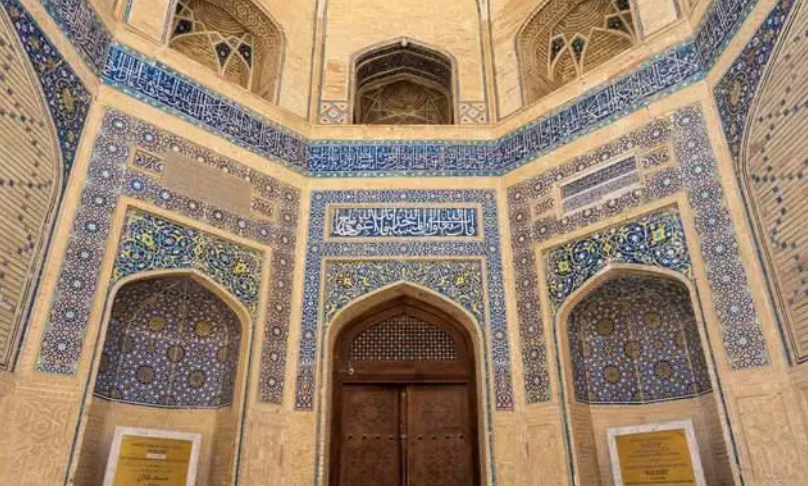Bukhara, the old city, is a collection of more than 140 protected buildings, and the domed bazaars at several crossroads are a feature of Bukhara. At 47 meters, the Kalon minaret was the tallest building in Central Asia at the time, right in front of my hotel, and the first person I tried to punch in was Char Minar, which means “four minarets” in Tajik.
Bukhara City walk: Char Minar-Nadir Divanbegi Sutra -Maghoki-Attar Mosque -Taqi-Telpak Furushon Market -Abdul Aziz Khan Sutra -Mir i Arab Sutra -Kalon Minaret – Ark imperial City
Once known as the Plague City, Bukhara was fed by civias, and in the 19th century life expectancy was only 32 years. Fortunately, now in the 21st century, the entire Bukhara water supply system has been well improved, and the hotel in the old town is of course very convenient for washing and bathing.
As I began to wander and explore the old city, an old man asked me on the road if I had eaten, saying that his family had just cooked pilaf, and I followed him through the streets to his house. As a result, several people served me one meal, including rice, tea, fruit and snacks. Altogether, 5w Som was equal to 35 RMB. After eating and looking at the map, Char Minar is far away from the rest of the old buildings, so I walked there first, struggling to find the right Angle to take a selfie of the four-tower mosque I had been longing for. There was a gentleman outside his house who saw me alone for a long time and offered to take a picture of me with the Char Tower. I was so happy.
The old town of Bukhara is not big. It is a comfortable place to walk around. I spent two whole days in Bukhara, wandering the streets of Bukhara at every moment. For my purpose of traveling, I always hope to experience infinite scenery in limited time. The first afternoon I was mostly around the minaret, walking east and west as far as Char Minar, back to Abdul Aziz Khan College, Kalon Minaret, Kalon Mosque, passing one or two roofed markets. A total of three domed markets remain in the entire old city of Bukhara. Xibani of Uzbekistan established the capital of the Khanate of Bukhara in the 16th century in this old city center, so the Old City Center, the architectural preserve where I am now, had many kinds of markets and hostels, mosques, institutes, and so on.
The Kalon minaret, which means “great” in the Tajik language, stands 47 meters high and its foundations are 10 meters deep. The sun shines on the tower at sunset, and the lights come on at blues time. It is so charming that it is an iconic building in Bukhara. I returned to the rooftop of the B&B and watched the sunset over the Old City from upstairs. When the sun is about to leave the present day and enter the distant earth plane, I wander over the square once more, this time to see the royal city of Bukhara and the observation tower in front of it.
The happiest journey is to sleep to wake up naturally, to wake up in the morning and eat breakfast slowly, and then go out late. Bukhara is the hottest city I think in Uzbekistan, probably because it’s in the middle of the desert, it can get up to 20 degrees in the middle of the day, stop and go, and in the afternoon sit in a cafe and watch the people.
Lyabi-Hauz is a square built around a pool, with ancient trees to shelter people from the sun and lots of seating to rest on. There are at least two more schools around the square, all of which have been converted into restaurants or different kinds of museums. Above the Nodir Devonbegi Madrasah’s door are two phoenix-like creatures, similar to the tigers we see in Samarkand, but what they mean is unknown.
The Ulugbek Institute, the oldest of its kind in Central Asia, is bathed in bright blue tiles every afternoon and is now a small museum where rare photographs are said to be visible. Opposite, the dome of Abdul Aziz khan College of Economics is very beautiful, a three-dimensional building with a sense of hierarchy, let me look in front of it for a long time. Funny thing is, it turns out electronic scales can be put on the side of the road for money, a thousand somms at a time. You have to remember 200 tenge a time to go to the toilet in Kazakhstan and 2,000 som in Uzbekistan. Try to keep some spare change with you.




